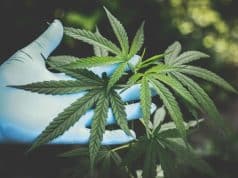Introduction to mescaline and its historical significance
Mescaline, also known as 3,4,5-trimethoxyphenethylamine, is a naturally occurring psychedelic compound found in various cacti, most notably the Peyote cactus. For centuries, indigenous cultures in the Americas have used mescaline-containing cacti for spiritual and ceremonial purposes. The use of mescaline predates recorded history, with archaeological evidence suggesting its use in rituals as far back as 5700 BCE.
What is mescaline and how is it synthesized?
Mescaline is a hallucinogenic compound that belongs to the phenethylamine class of chemicals. It acts as a serotonin receptor agonist, primarily targeting the 5-HT2A receptor. The synthesis of mescaline involves several steps, starting with the extraction of the compound from plants such as the Peyote cactus or the San Pedro cactus. Once extracted, mescaline can be purified and crystallized for recreational or research purposes.
The effects of mescaline on the mind and body
When consumed, mescaline induces a wide range of psychological and physical effects. On a psychological level, mescaline can produce vivid visual hallucinations, altered perception of time, enhanced creativity, and a sense of interconnectedness. Users often report experiencing profound spiritual or mystical experiences. Physically, mescaline can cause increased heart rate, elevated blood pressure, pupil dilation, and changes in body temperature. The effects of mescaline can last anywhere from 8 to 12 hours, depending on the dosage and individual metabolism. (1)
Potential therapeutic uses of mescaline
While mescaline is classified as a Schedule I controlled substance in many countries, there is growing interest in exploring its potential therapeutic benefits. Preliminary research suggests that mescaline may have applications in the treatment of mental health conditions such as depression, anxiety, and post-traumatic stress disorder (PTSD). Studies have shown that mescaline-assisted therapy can lead to significant reductions in symptoms and improved overall well-being. However, further research is needed to fully understand the therapeutic potential of mescaline and its long-term effects.
The legality of mescaline and its derivatives
The legal status of mescaline and its derivatives varies from country to country. In the United States, for example, mescaline is classified as a Schedule I substance under the Controlled Substances Act, making it illegal to possess, manufacture, or distribute. However, certain Native American religious groups are granted exemptions to use mescaline-containing cacti for ceremonial purposes. In other countries, such as Brazil, mescaline is legal and regulated for religious and cultural use. It is important to familiarize oneself with the local laws and regulations before considering the use or possession of mescaline or related substances.
Exploring the risks and side effects of mescaline use
While mescaline is generally considered to have a relatively low toxicity profile, it is not without risks. The use of mescaline can lead to adverse effects such as anxiety, paranoia, and confusion, particularly in individuals with a predisposition to mental health disorders. Additionally, mescaline can have a profound impact on perception and judgment, making it potentially dangerous in certain situations, such as driving or operating heavy machinery. It is crucial to approach mescaline use with caution and in a safe and controlled environment.
Comparing mescaline to other psychedelics
Mescaline belongs to a class of substances known as psychedelics, which also includes compounds such as LSD, psilocybin, and DMT. While all psychedelics share some common effects, such as altered perception and expanded consciousness, each compound has its own unique characteristics. Mescaline is often described as having a distinctively organic and earthy quality, with a strong emphasis on visual hallucinations. Comparing mescaline to other psychedelics can provide valuable insights into the different experiences and therapeutic potential of these substances.
The role of mescaline in traditional and spiritual practices
Mescaline has a long history of use in traditional and spiritual practices, particularly among indigenous cultures in the Americas. For these cultures, mescaline-containing cacti are considered sacred and are used in ceremonies to facilitate spiritual growth, healing, and communion with the divine. The ritualistic use of mescaline is deeply rooted in the cultural fabric of these communities and continues to be an integral part of their spiritual traditions.
Understanding TMA, a synthetic alternative to mescaline
TMA, or trimethoxyamphetamine, is a synthetic compound that closely resembles mescaline in its chemical structure and effects. TMA is often used as a legal alternative to mescaline, as it falls into a legal gray area in many jurisdictions. However, it is important to note that TMA has a higher potential for toxicity compared to mescaline and can produce more pronounced side effects. The use of TMA should be approached with caution and under the guidance of a knowledgeable professional.
Conclusion: The future of mescaline research and its potential benefits
As research into psychedelic substances continues to gain momentum, the potential benefits of mescaline are being recognized and explored. From its historical significance in indigenous cultures to its potential therapeutic applications, mescaline holds promise as a tool for personal growth, healing, and understanding. However, it is essential to approach mescaline use responsibly and within the bounds of the law. The future of mescaline research is promising, and further studies will shed light on its full potential and its role in improving mental health and well-being. (2)

Speaks from heart, always too passionate and driven by emotions. Spins the words with kindness & sharpness, intriguing your ever-inscrutable minds.




